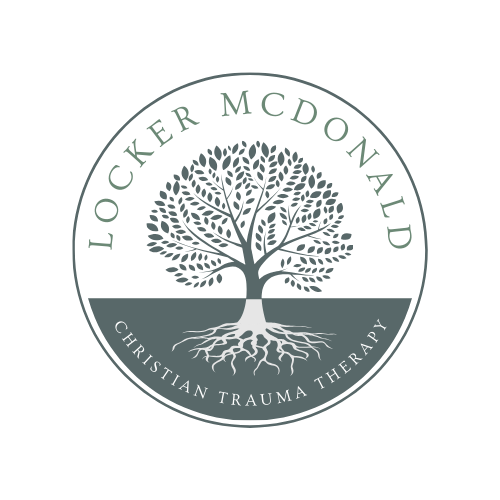What are some symptoms of childhood trauma in adulthood?

Childhood trauma leaves an indelible mark on the heart, mind, and body, shaping how we see ourselves, others, and the world. The effects of these early wounds often show up later in life in ways that can be difficult to connect to their source. As a therapist specializing in trauma-informed Christian counseling, I’ve worked with many individuals navigating the aftershocks of childhood trauma—sometimes without even realizing that’s what they were dealing with. Here are some common symptoms of childhood trauma in adulthood, along with insights into how they might manifest and steps toward healing.
Emotional Dysregulation
One of the hallmarks of childhood trauma is difficulty managing emotions. You might find yourself overwhelmed by feelings of anger, sadness, or fear, seemingly out of proportion to the situation. Dr. Curt Thompson’s work sheds light on how trauma disrupts the development of healthy emotional regulation by altering the nervous system. When a child experiences trauma, the brain’s fear center becomes overactive, while areas responsible for calming and reasoning may be underdeveloped. This can leave the nervous system in a state of chronic alertness, making emotional regulation a daily struggle. Recognizing these patterns is a key step toward healing and learning to retrain the brain’s responses.
Difficulty with Trust and Relationships
Relationships can feel like a minefield for individuals who experienced trauma in childhood. Whether it’s a fear of abandonment, a deep mistrust of others, or a tendency to people-please, these relational struggles often stem from early attachment wounds. Dr. Dan Siegel’s work on attachment and the brain highlights how early experiences with caregivers shape our internal working models of relationships. When trust is broken in these formative years, the brain encodes relational templates that can perpetuate cycles of fear or insecurity. I’ve seen this firsthand in many of my clients’ relationships. Growing up in environments where trust was broken or manipulation was common makes it difficult to feel safe in connection with others.
Low Self-Worth and Inner Critic
Trauma often sends a child the message that they are not good enough, unworthy, or unlovable. These beliefs can carry over into adulthood as a harsh inner critic or pervasive feelings of inadequacy. Jay Stringer’s Unwanted explores how shame and unmet needs from childhood can distort our sense of identity. Learning to challenge these false beliefs is essential to recovering a healthy sense of self.
Physical Symptoms
Trauma doesn’t just live in the mind; it resides in the body. Chronic pain, tension, gastrointestinal issues, or autoimmune conditions are often linked to unresolved trauma. Dr. Bessel van der Kolk, in The Body Keeps the Score, highlights how traumatic experiences become embedded in the nervous system and body, sometimes manifesting as physical symptoms long after the events have passed. Dr. Curt Thompson, in his work on the intersection of neuroscience and spirituality, complements this by emphasizing how the body holds memories of trauma, even when the conscious mind doesn’t. This is why holistic healing—addressing the mind, body, and spirit—is so important.
Hypervigilance and Anxiety
If you grew up in a chaotic or unsafe environment, you may struggle to feel calm or at ease as an adult. Hypervigilance—constantly scanning for danger—is a survival mechanism that becomes maladaptive over time. I’ve worked with clients who grew up in households marked by abuse, frequent arguments, manipulation, and unpredictability. As adults, these individuals often find themselves constantly on edge, and unable to relax even in safe environments. In therapy, we explore how the nervous system becomes conditioned to anticipate threats. By using techniques like grounding exercises and mindfulness, they began to retrain their nervous system to recognize safety in the present moment.
Steps Toward Healing
Healing from childhood trauma is possible, but it’s a journey that requires compassion, courage, and community. Here are some steps to consider:
- Seek Trauma-Informed Therapy: Approaches like EMDR, Internal Family Systems (IFS), and narrative therapy can help you process past wounds and reframe your story.
- Build Emotional Awareness: Journaling or mindfulness practices can help you notice and name your emotions, creating space for healthier responses. As Dan Allender often says, “Naming our pain is the beginning of redemption.”
- Integrate Faith: For those of us who are Christians, our faith offers profound resources for healing. Understanding God’s love and grace can transform how we see ourselves and our stories.
- Connect with Safe People: Healing happens in relationship. Finding trusted friends, support groups, or spiritual mentors can help you rebuild a sense of safety and connection.
Conclusion
The symptoms of childhood trauma in adulthood are varied and complex, but they’re not insurmountable. As someone who has walked alongside clients—and navigated parts of this journey myself—I believe deeply in the possibility of healing. Your past may shape you, but it doesn’t have to define you. With the right tools and support, you can step into a future marked by hope, resilience, and wholeness.
If you’re ready to take the next step, I’d be honored to walk alongside you on this journey. Reach out today to begin reclaiming your story.
